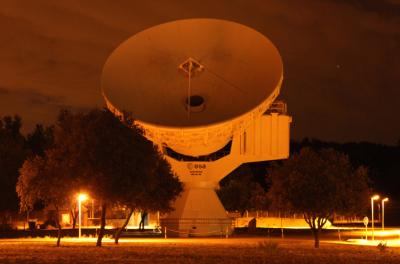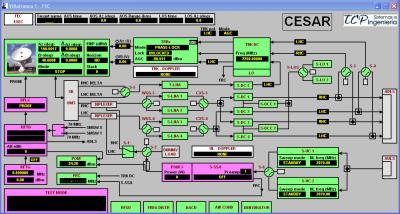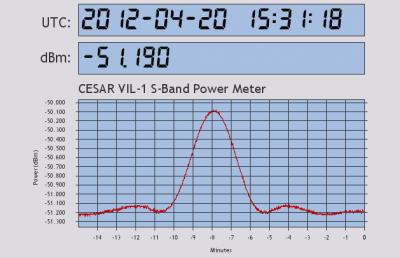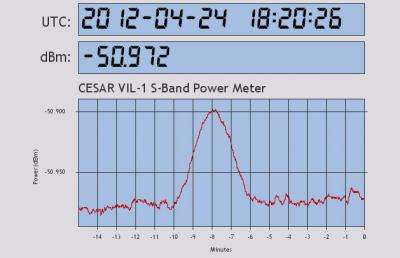The CESAR ESAC Radio telescope is formed by the ESAC VIL-1 S-Band Antenna connected to an AGILENT Power Meter. The observation plan is defined by means of the ESA´s ESTRACK Operational Station Utilization Plan (OSUP) and the observations are performed manually in transit mode. It is done pointing the antenna to a fix position in the sky waiting for the pass of the source in front of the main beam of the antenna. The following images show the dish and the antenna control system.
 CESAR ESAC Radio Telescope. Photo by Manuel Castillo (CESAR)
CESAR ESAC Radio Telescope. Photo by Manuel Castillo (CESAR)
 CESAR ESAC Radio Telescope Control System (TCP Sistemas e ingeniería)
CESAR ESAC Radio Telescope Control System (TCP Sistemas e ingeniería)
At the moment, several RADIO sources are being systematically surveyed to define a list of calibration sources and to prepare a first selection for the CESAR education purposes of objects with detectable S-band emission produced by different physical mechanisms. The following images show the signal received from two sources of different nature and radio emission mechanisms observed in transit mode.
The first one is the
crab nebula (M1). Its signal was received on 2012-04-20. This object is a a remnant of a supernovae explosion that The creation of the Crab Nebula corresponds to the bright SN 1054 supernova that was independently recorded by Chinese and Japanese astronomers in 1054 AD. In its centre, there is a pulsar. It is a neutron star created after the SN explosion that emits a very directional signal pulsating at a high frequency due to its very fast rotation.
 Signal received from M1. Manuel Castillo (CESAR)
Signal received from M1. Manuel Castillo (CESAR)
The second one is the
quasar 3C273 and it was observed with CERT on 2012-04-24. A quasar (quasi-stellar radio source) is a very energetic and distant active galactic nucleus. 3C273 is at a distance of 2200 million light years.
 Signal received from quasar 3C273. Manuel Castillo (CESAR)
Signal received from quasar 3C273. Manuel Castillo (CESAR)